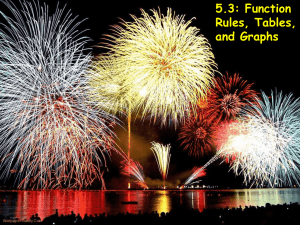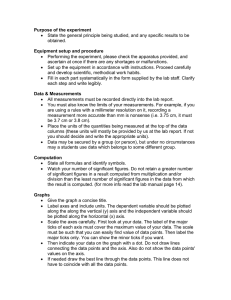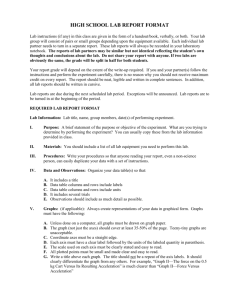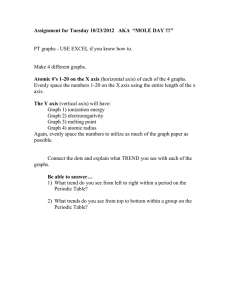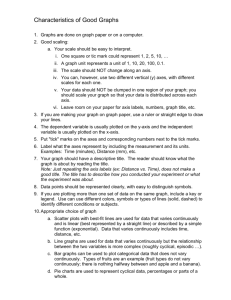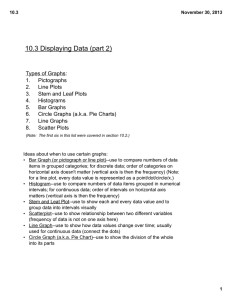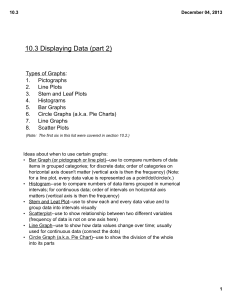APA Figures
advertisement
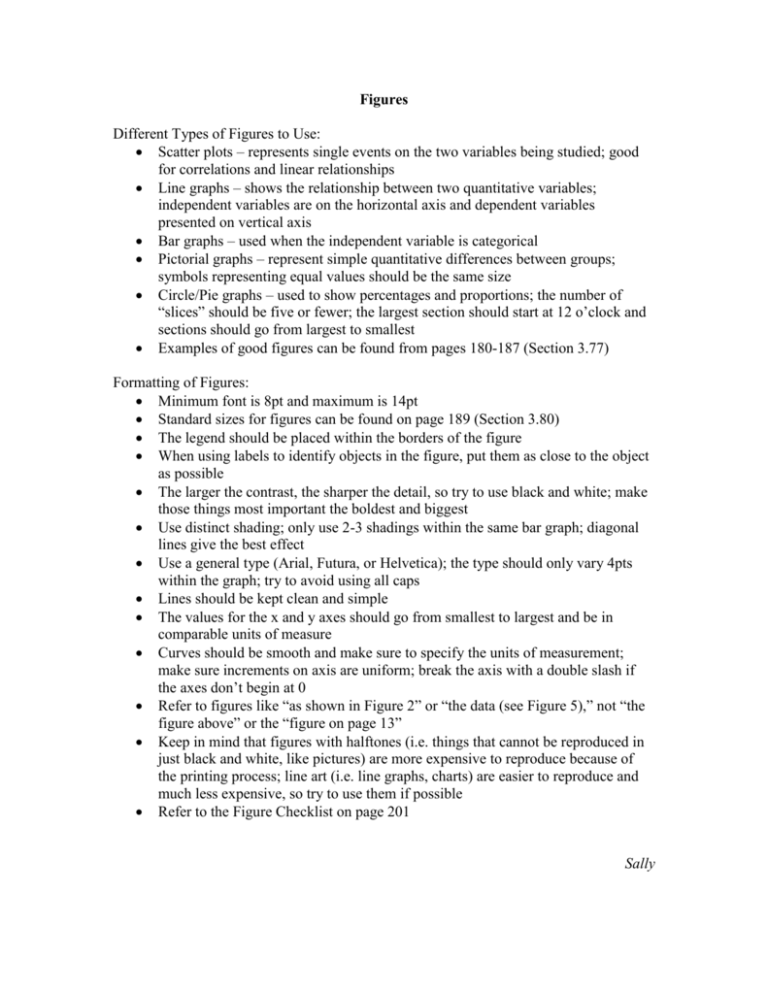
Figures Different Types of Figures to Use: Scatter plots – represents single events on the two variables being studied; good for correlations and linear relationships Line graphs – shows the relationship between two quantitative variables; independent variables are on the horizontal axis and dependent variables presented on vertical axis Bar graphs – used when the independent variable is categorical Pictorial graphs – represent simple quantitative differences between groups; symbols representing equal values should be the same size Circle/Pie graphs – used to show percentages and proportions; the number of “slices” should be five or fewer; the largest section should start at 12 o’clock and sections should go from largest to smallest Examples of good figures can be found from pages 180-187 (Section 3.77) Formatting of Figures: Minimum font is 8pt and maximum is 14pt Standard sizes for figures can be found on page 189 (Section 3.80) The legend should be placed within the borders of the figure When using labels to identify objects in the figure, put them as close to the object as possible The larger the contrast, the sharper the detail, so try to use black and white; make those things most important the boldest and biggest Use distinct shading; only use 2-3 shadings within the same bar graph; diagonal lines give the best effect Use a general type (Arial, Futura, or Helvetica); the type should only vary 4pts within the graph; try to avoid using all caps Lines should be kept clean and simple The values for the x and y axes should go from smallest to largest and be in comparable units of measure Curves should be smooth and make sure to specify the units of measurement; make sure increments on axis are uniform; break the axis with a double slash if the axes don’t begin at 0 Refer to figures like “as shown in Figure 2” or “the data (see Figure 5),” not “the figure above” or the “figure on page 13” Keep in mind that figures with halftones (i.e. things that cannot be reproduced in just black and white, like pictures) are more expensive to reproduce because of the printing process; line art (i.e. line graphs, charts) are easier to reproduce and much less expensive, so try to use them if possible Refer to the Figure Checklist on page 201 Sally
